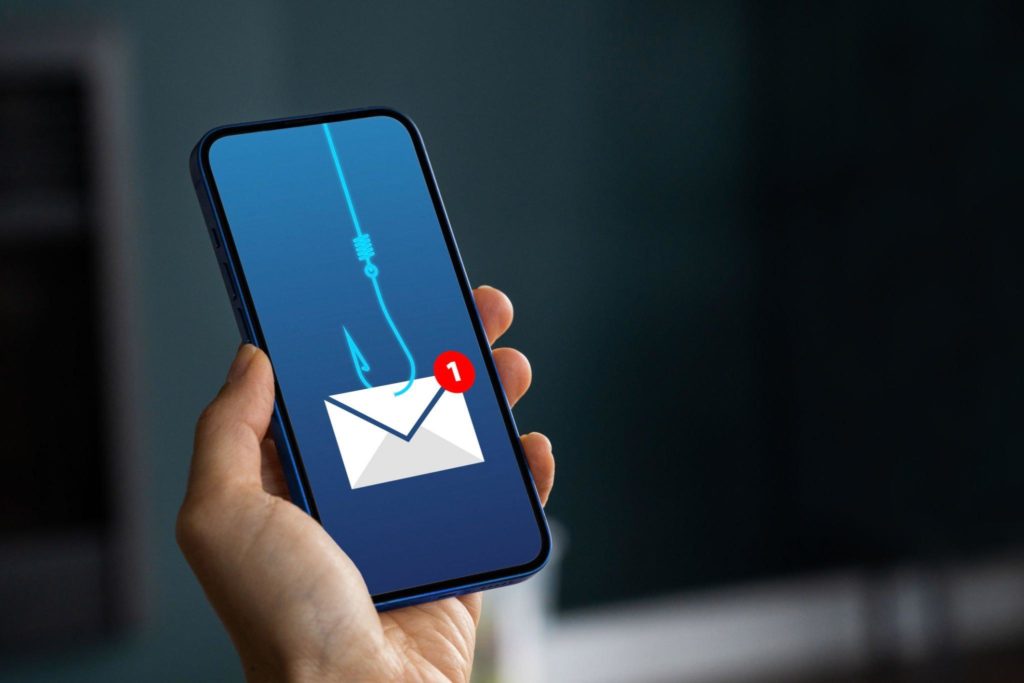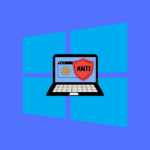The virtual world is vast, filled with endless interactions, involvements, and dealings. Yet, just like the real sea, it also contains many hidden threats ready to strike when you least expect it.
Phishing is one of these predators, one of the most deceptive and damaging threats in our current digital landscape. You’ve probably heard of it, but do you truly know what it looks like? Can you identify the various forms of phishing to avoid getting caught in these digital traps?
In this guide, we’ll dive deep into the murky waters of phishing, shedding light on these devious techniques and giving you the know-how to navigate the waters safely.
So buckle up, it’s time to go phishing… for knowledge!
Table of Contents
Common Types of Phishing and Quick Tips to Avoid
Email Phishing
Email phishing is one of the oldest and most common types of phishing attacks, where cybercriminals impersonate a trustworthy sender to trick you into revealing sensitive information or clicking on malicious links.
Always be cautious when opening emails from unknown senders and inspect links before clicking them. Depending on your email program, simply hovering over a link can reveal its actual destination, saving you from clicking on something you shouldn’t.
Spear Phishing
Spear phishing is a targeted form of phishing where attackers research your personal information and use it to create a personalized email appearing to come from a trusted source, like a colleague or a known organization.
To protect yourself, always verify any requests for your data before sharing it.
Whaling
Whaling is a specific type of spear phishing that targets high-level executives and decision makers within an organization. Attackers may attempt to forge emails from other executives or members of the company and use executive-specific subject matter to make their efforts look even more convincing.
Stay vigilant about verifying the authenticity of emails, even from colleagues and supervisors.
Vishing
Vishing, or voice phishing, is a phishing attack conducted via phone calls or voice messages. An attacker may pose as a bank representative or a customer service agent to trick you into revealing personal information, or even transferring funds to a fraudulent account.
Always verify a caller’s identity before providing any information whatsoever over the phone.
Smishing
Smishing, or SMS phishing, involves sending text messages that appear to be from a reputable organization or service such as your bank, prompting you to reply or click on a link within the message.
Be cautious of unexpected text messages and avoid clicking on any links or even responding at all to unknown texts. Period.
Clone Phishing
Clone phishing involves creating a near-identical copy of a legitimate email and sending it to the intended recipients with a slight change, such as replacing a link or attachment with a malicious version.
To avoid clone phishing, double-check the email details and verify the sender’s identity before proceeding.
Social Media Phishing
Social media phishing targets users on social media platforms by sending phishing messages through fake accounts, or by impersonating friends and colleagues.
Be cautious when accepting new friend requests and verify any messages or requests for information before responding.
Watering Hole Phishing
Watering hole phishing refers to infecting specific websites known to be frequently visited by a targeted group of individuals. The attackers then use these sites to launch further phishing attacks on unsuspecting visitors.
Ensure your computer and its security software are up-to-date and avoid visiting unfamiliar websites.
Angler Phishing
Angler phishing is a type of social media phishing attack where cybercriminals impersonate a company’s customer support team and intercept customer complaints or queries, providing false and often malicious solutions that may lead to compromise.
Always verify that you’re communicating with an official support channel before disclosing any information.
Pop-up Phishing
Pop-up phishing occurs when an attacker uses pop-up windows, usually appearing as login screens or security alerts, to steal your credentials or personal information.
To avoid falling for pop-up phishing, keep your browser and security software updated and never enter your credentials in pop-up windows that seem even remotely suspicious.
Evil Twin Phishing
Evil twin phishing involves the creation of a fake Wi-Fi network, mimicking a legitimate one, to intercept and steal the data of unsuspecting users.
Be cautious when connecting to public Wi-Fi networks, and always consider using a Virtual Private Network (VPN) for added security.

Phishing Techniques and Strategies
Spoofing and Fake Websites
Phishing attacks often involve spoofing and the creation of fake websites to deceive you. These websites may imitate the design and appearance of legitimate websites such as banks, social media platforms, or email service providers.
You should be cautious when entering your personal or financial information on any website; always double-check the URL to ensure it is the correct address for the legitimate site before proceeding.
Malicious Links and Attachments
Another common phishing strategy involves sending emails or texts containing malicious links or attachments. These links might look like they’re from a trusted source, but they can lead to a fake website or can directly download malware onto your device.
Be careful when clicking links and opening attachments, especially if they’re unexpected or from unknown senders.
Social Engineering
Phishing attacks often employ social engineering techniques to manipulate you into divulging sensitive information. Attackers might impersonate someone you know, like a coworker or a company executive.
They may also use convincing language and scenarios to gain your trust and persuade you to take specific actions, such as sharing your password or providing confidential information. Stay vigilant and always verify the identity of people requesting sensitive information.
Sense of Urgency
Phishers often create a sense of urgency to pressure you into making hasty decisions. For example, they might send an email saying your account has been compromised, prompting you to click a link to reset your password immediately.
Learn to recognize these tactics and take a moment to consider the situation before taking any action. Contact the company or person directly to confirm the validity of the urgent request before moving forward.
Targets of Phishing Attacks
Phishing attacks can target various entities, including individuals, businesses, executives, and financial institutions. Each of these targets might experience different forms of phishing, such as Business Email Compromise (BEC), CEO fraud, or specific attacks directed at top executives.
Individuals
As an individual, you might encounter phishing attacks that seem tailored to your personal interests or specific circumstances. Cybercriminals can use information about your online habits or social media to manipulate you into responding to their schemes.
They might, for instance, send emails impersonating a friend or an online service you use. It is essential to stay vigilant and verify the authenticity of any unexpected communication to avoid falling prey to such attacks.
Businesses and Executives
Phishing attacks targeting businesses and executives often involve Business Email Compromise (BEC) or CEO fraud. In these cases, cybercriminals impersonate top executives or CEOs and attempt to trick employees, especially those holding sensitive information, into providing access or transferring funds.
These attackers generally send well-crafted, highly targeted emails that appear to come from legitimate sources within the company. To protect your business, ensure all employees understand the potential risks and develop a strong security culture.
Financial Institutions
Financial institutions, such as banks and credit card companies, also face phishing attacks. Hackers may target their customers, attempting to lure them into revealing their account information or other sensitive data.
Alternatively, attackers might target the institutions themselves, attempting to infiltrate networks and gain access to customer information or funds.
To safeguard your financial institution, invest in robust cybersecurity measures, educate employees and customers about phishing risks, and continuously monitor for potential threats.
The Impact of Phishing
Identity Theft and Sensitive Data Loss
Phishing attacks can lead to identity theft and the loss of sensitive data. When you fall for a phishing scam, cybercriminals may gain access to your personal information, such as account numbers, passwords, and other sensitive data.
This may allow them to steal your identity and make unauthorized transactions in your name.
Financial Loss and Fraud
Financial loss is another significant consequence of phishing attacks. Cybercriminals can use the sensitive information obtained, such as your account numbers and credit card details, to commit fraud.
They might make unauthorized purchases, empty your bank accounts or even apply for loans and credit cards under your name.
Reputation Damage and Cybersecurity Risks
Phishing attacks don’t only affect individuals; they can also target businesses and organizations, leading to severe consequences such as reputation damage and cybersecurity risks.
A successful phishing attack can cause significant harm to a company’s reputation, as customers and clients may lose trust and confidence in the organization’s ability to secure sensitive information.
Additionally, organizations may face cybersecurity risks such as malware, ransomware, and other cyber threats that can compromise their network, systems, and devices.
Implementing robust cybersecurity measures and training employees to recognize phishing attempts are vital steps for organizations to mitigate these risks.

Protecting Yourself from Phishing
By recognizing red flags, employing basic cybersecurity measures, and participating in security awareness training, you can protect yourself from falling victim to phishing attacks.
Recognizing Red Flags
Being able to spot the signs of phishing emails is crucial in protecting yourself from potential scams.
Some common warning signs to look out for include:
- Unfamiliar greeting or tone
- Unsolicited messages
- Grammar and spelling errors
- A sense of urgency
Ensure that you stay vigilant for these red flags in any email or text message you receive, especially if asked for personal information.
Basic Cybersecurity Measures
Following some basic cybersecurity measures can greatly help in protecting your information from phishing scams. Some of these measures include:
- Always keeping your software and devices updated
- Using strong, unique passwords for each of your accounts
- Enabling two-factor authentication where possible
- Checking the URL of a website before entering any sensitive information
By employing these safety precautions, you can reduce the likelihood of your information being compromised by hackers or scammers.
Security Awareness Training
Another essential step in protecting yourself from phishing attacks is participating in security awareness training.
These training programs will help you:
- Familiarize yourself with the latest phishing techniques (there are always surprises in here, believe me)
- Learn how to avoid opening malicious links or attachments
- Understand how to report suspected phishing attempts to your organization’s IT department
By acquiring the knowledge and skills provided in security awareness training, you are much better equipped to recognize and avoid phishing scams, ensuring your personal and financial information remains secure.
Reporting and Combatting Phishing
Anti-Phishing Working Group
The Anti-Phishing Working Group (APWG) is an international coalition dedicated to fighting phishing attacks and related cybercrimes. To combat phishing effectively, you can report incidents to APWG. They collect data and help track, analyze, and share information about phishing trends with law enforcement agencies and the public.
When encountering a phishing attempt, forward the email or URL to reportphishing@apwg.org. By doing this, you’re assisting the APWG in gathering evidence and information that can be used to combat current and future phishing attacks.
Federal Trade Commission (FTC)
The Federal Trade Commission (FTC) also plays a significant role in fighting phishing and helping consumers stay protected. If you receive a phishing email or text message, you can report it to the FTC at ftc.gov/complaint.
Your reports play a crucial part in helping authorities identify and take action against those responsible for phishing scams. Stay vigilant and proactive in protecting yourself and others from cyber threats.
And remember, use these key techniques on a regular basis to help protect yourself from phishing attacks:
- Recognize Phishing: Be cautious of emails and messages that demand personal or financial information, especially if they evoke a sense of urgency.
- Verify the Source: Independently confirm the identity of the sender before sharing sensitive information.
- Keep Your Software Updated: Use the latest security patches and updates to protect your devices from phishing attacks.
The digital world can be a vast, thrilling, yet dangerous ocean if you’re not careful. But armed with the knowledge of various forms of phishing, you’re no longer an easy catch for these online predators.
Recognizing these devious techniques is your first line of defense in securing your online life. Remember, the best way to avoid a trap is to first know of its existence. Keep your eyes open, stay vigilant, and don’t take the bait.
At PrivacyDefend.com, we’ll continue to arm you with the information you need to stay safe online. Keep checking back for more tips and insights to help you navigate these digital waters safely.
Forms of Phishing FAQs
What is the most popular type of phishing?
The most popular type of phishing is arguably email phishing. This form involves sending fraudulent emails that appear to come from a legitimate business or a trusted source.
These emails typically aim to trick recipients into revealing personal information, such as passwords, credit card numbers, or social security numbers, by clicking on a link or filling out a form.
What are the most targeted phishing attacks?
Spear phishing is among the most targeted phishing attacks. Unlike broad, indiscriminate phishing attempts, spear phishing targets specific individuals or organizations.
The attackers often do extensive research on their targets to make the scam emails seem more authentic, making this form of phishing particularly dangerous and effective.
Who are the most common victims of phishing?
In truth, anyone can fall victim to phishing; it doesn’t discriminate. However, certain groups are often targeted more frequently due to their perceived vulnerability or the valuable information they hold.
These include the elderly, employees in large corporations, and clients of financial institutions. Cybercriminals also often target high-level executives or those with access to critical company data.
What is a common indicator of a phishing attempt?
One common indicator of a phishing attempt is an unexpected email or message urging immediate action. These messages often contain suspicious links and may request personal information.
They might have poor grammar or spelling, and the sender’s email address might not match the legitimate organization’s email format.
It’s always important to remain skeptical of such communications and verify their legitimacy before responding or clicking on any links.
- Amazon Email Phishing: How to Identify and Avoid Scams - May 11, 2025
- Malwarebytes vs McAfee: Decoding the Ultimate Antivirus Battle - May 11, 2025
- Best Antivirus for Windows 10: Expert Recommendations for 2023 - May 11, 2025










4 thoughts on “Forms of Phishing: Your Guide to Avoiding Digital Traps”